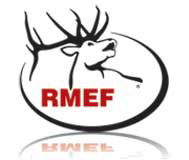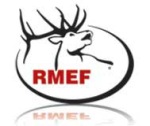MISSOULA, Mont.—Grants provided by the Rocky Mountain Elk Foundation will fund projects designed to expand elk range, increase forage, improve elk management, monitor elk calf recruitment and provide sponsorship of multiple hunting heritage programs and events benefitting 28 different counties in Wisconsin.
 The grants total $65,940 and positively affect these counties: Adams, Ashland, Barron, Bayfield, Burnett, Chippewa, Clark, Columbia, Dodge, Jackson, Juneau, Kenosha, La Crosse, Lincoln, Marathon, Monroe, Oneida, Pierce, Price, Racine, Rusk, Sauk, Sawyer, St. Croix, Washburn, Waupaca, Winnebago, and Wood. There are also several statewide projects.
The grants total $65,940 and positively affect these counties: Adams, Ashland, Barron, Bayfield, Burnett, Chippewa, Clark, Columbia, Dodge, Jackson, Juneau, Kenosha, La Crosse, Lincoln, Marathon, Monroe, Oneida, Pierce, Price, Racine, Rusk, Sauk, Sawyer, St. Croix, Washburn, Waupaca, Winnebago, and Wood. There are also several statewide projects.
“Wisconsin reintroduced elk 18 years ago but the animals have only expanded 10 percent beyond their initial territory,” said Blake Henning, RMEF vice president of Lands and Conservation. “These grants will improve forage on the Clam Lake Elk Range and also assist with the translocation of elk to other areas within the 1,600 mile range.”
Since 1985, RMEF and its partners completed 249 different conservation and hunting heritage outreach projects in Wisconsin with a combined value of more than $6.3 million.
“It’s important to understand that the funds generated for these projects come from our hard working volunteers in Wisconsin. They raise money through banquet fundraising and membership drives,” said David Allen, RMEF president and CEO. “They are making a difference in enhancing the future of elk and elk habitat in their own state. To them we say ‘Thank you!’”
Allen also thanked RMEF chapters and volunteers around the nation for their dedication to conservation all across elk country.
RMEF grants will help fund the following 2013 projects, listed by county:
Ashland County—Improve elk forage habitat on 741 acres of the Chequamegon National Forest within the Clam Lake Elk Range via mowing, hand clearing and aspen regeneration projects (also affects Sawyer County); train high school students to monitor the “Butternut” elk subgroup by using radio telemetry equipment and collecting data for the Wisconsin Department of Natural Resources as a cost effective effort to support Wisconsin’s elk management efforts; provide funding and volunteers for annual effort to find, collar, and take measurements of calves to better monitor the health and size of the elk population; and provide funding to pay for electricity fees to run the kiosk at the Clam Lake Elk Visitor Center.
Barron County—Provide funding to help introduce the National Archery in the Schools Program (NASP) through summer school with a goal to infuse it into the Rice Lake Area School District’s Physical Education curriculum.
Burnett County—Provide funding and volunteer effort from RMEF Lake Country Chapter to assist with shooting, archery, fishing, orienteering, pack mules and other demonstrations at the annual Coyland Creek Youth in the Outdoors Day.
Chippewa County—Co-sponsor firearms safety and shooting instruction at Women on Target clinic at the Bloomer Rod and Gun Club.
Dodge County—Provide funding to purchase start-up equipment for NASP at Horicon High School and Mayville High School.
Dunn County—Co-sponsor firearms safety and shooting instruction at Women on Target clinic at the Menomonie Rifle and Pistol Club.
Kenosha County—Provide funding for the Central Falcons trap and skeet team to participate in the Scholastic Clay Target Program (SCTP) of the Scholastic Shooting Sports Foundation and the Southeastern Wisconsin Youth SCTP Trap Shooting Conference; and provide funding to help purchase more equipment for the archery program at Trevor-Wilmot Grade School.
Marathon County—Provide funding to assist instructors with the Weston Hunter Safety program for bow and rifle (also affects Lincoln and Wood Counties); and provide funding to foster a greater appreciation for and understanding of hunting, fishing and trapping, for youth and adults at Marathon County Sporting Heritage Youth Day (also affects Lincoln and Wood Counties).
Monroe County—Provide funding for the Camp Douglas Sportsman’s Club Youth Trap Shooting League which offers youth age 10-17 the opportunity to learn how to handle a firearm safely and in a controlled environment (also affects Juneau, Jackson and Wood Counties); and provide funding for ammunition, transportation and program promotion of the Tomah Warrens Shooting Alliance, a shooting clay club for youth that qualified for nationals in its first year of existence.
Oneida County—Provide funding for the Rhinelander Youth Outdoor Heritage Day which encourages youth to pursue hunting, fishing and other outdoor activities.
Pierce County—Provide funding to pay for targets and pellets at the Second Annual Pierce County 4-H Shooting Sports Western Gateway Shoot, a national qualifying event that drew members from across the state and featured competitions in archery, air rifle, air pistol, .22 rifle, .22 pistol, shot gun and wildlife ecology (also affected St. Croix County and statewide interests).
Racine County—Provide funds to pay for supplies for students ranging in grades 4-12 in the Burlington Area School District to participate in the SCTP and the Southeastern Wisconsin SCTP Trap Shooting Conference.
Sauk County—Provide funding to help purchase NASP equipment for the Wisconsin Dells Parks and Recreation Archery Program (also affects Juneau, Columbia and Adams Counties).
Saywer County—Improve 618 acres of northern Wisconsin elk habitat by implementing prescribed burns and mowing within the state’s expanded elk range with a goal to restore double digit annual elk population growth, and improve habitat for wild turkeys, sharptailed grouse, woodcock, ruffed grouse, black bear, white-tailed deer and other wildlife (also affects Price and Rusk Counties); assist with translocation of 12 to 20 elk per year for the next three winters to spur population growth and range throughout the state’s 1,600-square-mile elk zone (also affects Ashland, Bayfield, Price and Rusk Counties); and provide funding for Hayward Outdoor Youth Day which provides youth an opportunity to learn about archery, fishing, outdoor cooking, plant identification, dog training, BB gun shooting and trapping.
Statewide—Provide funding for annual Wisconsin Outdoor Education Expo, a free event that includes hands-on activities for 4th and 5th graders to learn about archery, fishing, sporting dog events and firearms safety in order to foster a better appreciation for wildlife and wild places; and help cover the cost of printing the Wisconsin Department of Natural Resources hunting regulations manual.
Washburn County—Provide funding to help purchase a NASP start-up kit for Spooner Middle School.
Waupaca County—Provide funding for purchasing start-up NASP equipment at Clintonville School District.
Winnebago County—Provide funding to assist with upgrades to the parking lot, path, shooting line, berms, targets, sheds, arrow quivers, bow hangers and other site amenities at the Neenah Parks & Recreation Outdoor Archery Range.
Wood County—Provide funding for RMEF Yellow River Basin Chapter to attend the Lindsay Youth Fair and assist with helping youth foster an appreciation for elk, elk biology, conservation and outdoor activities such as animal displays, fishing, shooting, and hunter safety instruction; and provide funding for approximately 105 boys and girls age 8-9 enrolled in the Central Wisconsin 4-H Shooting Sports program which offers training in air pistol, air rifle, archery and wildlife ecology (also affects Clark and Marathon Counties).
Conservation projects are selected for grants using science-based criteria and a committee of RMEF volunteers and staff along with representatives from partnering agencies. RMEF staff and volunteers select education projects to receive grants. RMEF volunteers and staff select hunting heritage projects to be funded.
Partners for 2013 Wisconsin projects include the Wisconsin Department of Natural Resources, Chequamegon National Forest, RMEF volunteers and other government, state, wildlife, business and volunteer organizations.
About the Rocky Mountain Elk Foundation:
RMEF is leading a conservation initiative that protected or enhanced habitat on more than 6.3 million acres—an area larger than Yellowstone, Grand Canyon, Glacier, Yosemite, Rocky Mountain and Great Smoky Mountains national parks combined. RMEF also is a strong voice for hunters in access, wildlife management and conservation policy issues. RMEF members, partners and volunteers, working together as Team Elk, are making a difference all across elk country. Join us at http://www.rmef.org or 800-CALL ELK.
Tags: RMEF, Rocky Mountain Elk Foundation
 “This transaction not only protects high wildlife habitat values and thwarts the potential threat of increasing development, but it’s also the first conservation easement in Platte County,” said Blake Henning, RMEF vice president of Lands and Conservation. “The location is significant since subdivisions are in the works less than five miles away. This action may encourage nearby landowners to consider conservation over development as they go forward.”
“This transaction not only protects high wildlife habitat values and thwarts the potential threat of increasing development, but it’s also the first conservation easement in Platte County,” said Blake Henning, RMEF vice president of Lands and Conservation. “The location is significant since subdivisions are in the works less than five miles away. This action may encourage nearby landowners to consider conservation over development as they go forward.”
